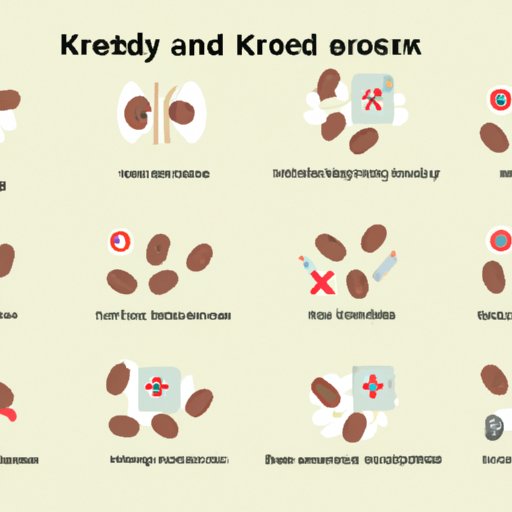Introduction
Kidney stones are hard deposits of minerals and salts that form inside your kidneys. They can be painful and uncomfortable, and they can cause a range of other symptoms as well. In this article, we’ll explore how someone might get kidney stones, the symptoms associated with them, and the treatments available.
Causes of Kidney Stones
There are several potential causes of kidney stones. These include dehydration, poor diet, genetics, and medications. Let’s take a closer look at each of these.
Dehydration
Dehydration is one of the most common causes of kidney stones. When you don’t drink enough water, your urine becomes more concentrated. This increases the risk of crystals forming in your kidneys. It’s important to stay hydrated by drinking plenty of water throughout the day.
Poor Diet
A poor diet can also increase your risk of developing kidney stones. Eating a diet high in processed foods and refined sugars can lead to an accumulation of waste products in your body. These waste products can form crystals in your kidneys and lead to kidney stones.
Genetics
Some people are more prone to developing kidney stones due to their genetic makeup. If you have a family history of kidney stones, you may be more likely to get them yourself.
Medications
Certain medications can also increase your risk of developing kidney stones. These include some antibiotics, diuretics, and calcium-based drugs. If you’re taking any of these medications, talk to your doctor about the risks involved.
Symptoms of Kidney Stones
If you have kidney stones, you may experience a range of symptoms. These can include pain in the lower back, abdomen, or groin area, blood in the urine, nausea and vomiting, and urinary tract infection.

Diagnosis and Treatment Options for Kidney Stones
If you suspect you have kidney stones, it’s important to see a doctor for diagnosis. Imaging tests such as X-rays and ultrasounds can help diagnose kidney stones. Your doctor may also recommend medical procedures such as lithotripsy to break up the stones. Medications can also be used to reduce the pain associated with kidney stones.
Lifestyle Changes to Reduce Risk of Kidney Stones
Making certain lifestyle changes can help reduce your risk of developing kidney stones. These include increasing your fluid intake, eating a healthy diet, limiting salt intake, and avoiding certain medications. Additionally, it’s important to exercise regularly and maintain a healthy weight.

Natural Remedies for Kidney Stones
There are several natural remedies that can be used to treat kidney stones. Herbal supplements such as nettle leaf, dandelion root, and corn silk can help reduce the pain associated with kidney stones. Apple cider vinegar and lemon juice can also help break up the stones. Finally, drinking plenty of fluids can help flush the stones out of your system.
Surgery for Kidney Stones
In some cases, surgery may be necessary to remove the kidney stones. There are several types of surgery available, including shockwave lithotripsy, percutaneous nephrolithotomy, and ureteroscopy. After surgery, it’s important to follow your doctor’s instructions for post-surgery care.

Prevention Tips for Avoiding Kidney Stones
The best way to avoid getting kidney stones is to practice prevention. This includes staying hydrated, eating a balanced diet, exercising regularly, and taking supplements if needed. Additionally, if you have a family history of kidney stones, it’s important to talk to your doctor about your risk factors.
Conclusion
Kidney stones can be painful and uncomfortable, but there are ways to prevent and treat them. By staying hydrated, eating a healthy diet, and avoiding certain medications, you can reduce your risk of getting kidney stones. If you do experience symptoms of kidney stones, it’s important to see a doctor for diagnosis and treatment.
(Note: Is this article not meeting your expectations? Do you have knowledge or insights to share? Unlock new opportunities and expand your reach by joining our authors team. Click Registration to join us and share your expertise with our readers.)
